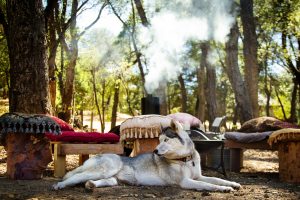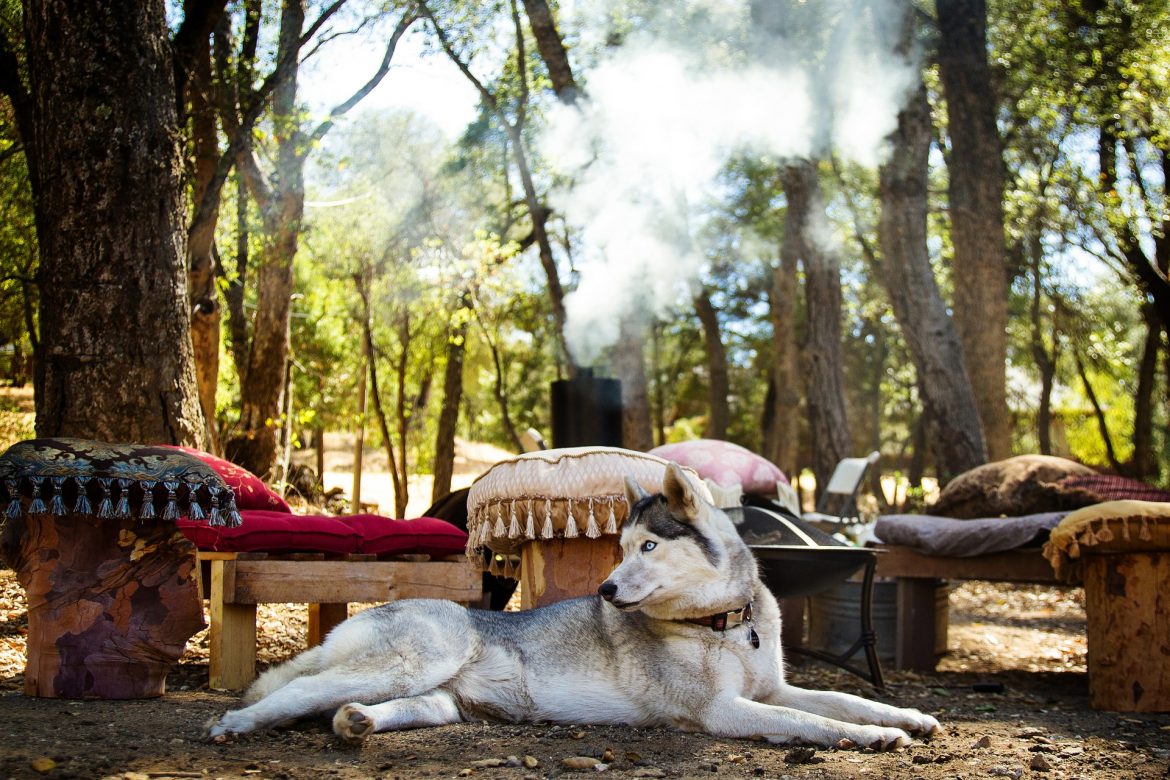The bushfire smoke has been hard on all of us, and that includes our furry friends. If you’ve been concerned about how your pet is reacting to the bushfire smoke, we’re here to help. Here is our guide to understanding how bushfire smoke affects our four-legged friends and some tips to reduce risk.

First, what are the impacts of bushfire smoke on pets?
There’s been ample research conducted on how bushfire smoke affects humans, but what about dogs, cats, and other furry friends? Well, just like with humans, animals can face negative impacts that come with heightened smoke levels.
Coughing; eye and throat irritation; increased heart rate; laboured breathing; and general fatigue are all symptoms that Pet Owners share with their beloved pets. In addition to that, the Victoria State Government warned that dogs and cats may also experience stomach irritation if they’re consuming ash through self-grooming. They may also consume ash from chewing on outdoor plants.
Are some animals at higher risk from bushfire smoke?
Breeds with brachycephalic or shortened snouts, such as Persian cats and French Bulldogs, may be more impacted by bushfire smoke. That’s because they’re equipped with shortened air paths that may not filter out harmful smoke as effectively.
Older animals and very young animals, as well as any animals with pre-existing respiratory issues or other medical problems, are also at higher risk for bushfire smoke.
Finally, the animals that may be most impacted are the ones that generally spend most of their time outside. While smoke levels are high, it’s imperative that outdoor dogs and cats are brought inside to lower the risk.
What can Pet Owners do about bushfire smoke?
As attentive Dog and Cat Owners, there are many things that you can do to keep your pets happy and healthy while waiting for better air quality to be restored.
Here are the basics:
- Keep your pet inside as much as possible. As Dog Owners ourselves, we’re as disappointed as anyone to have to keep our puppers inside. But until we return to normal air quality, this is one of the most effective ways to protect our pets. If you have a dog or cat that spends the majority of their time outside, bring them in and make sure they can’t wiggle their way outside without you.
- If you do go out, be mindful. Even the most relaxed of dogs need some daily fresh air, so keep an eye on the smoke reports to find the best time during the day to leave the house. It’s also important to keep things calm. Instead of powering through your walk in order to get home quickly, it’s better to lower the intensity of physical exercise for your pup. For breeds at high risk for respiratory problems, you should limit their outdoor activity to potty breaks only.
- Find alternatives for your exercise regimen. In order to keep your pets healthy and happy, you’ll need to find some indoor activities to keep them engaged and well-exercised. Take a look at our articles on How to Keep Your Indoor Cat Active and How to Exercise Your Dog Indoors for some ideas.
- Invest in some protective gear. There are plenty of face masks for people to wear when the air quality gets this bad, so you might be wondering if there are some for your pets, too. Some companies have started making smoke-protective masks for dogs, which will protect your dog when you take them for their outdoor potty breaks. Get in touch with your local pet stores to see if they carry them or would be willing to order them, or take a look online.
- Change your air conditioning settings. A simple tip from ABC News is to switch your air conditioning settings to recycle. That will ensure that you’re not drawing in outdoor air and filling your home with smoke.
- Groom regularly. As we mentioned earlier, dogs and cats may ingest ash during self-grooming. Prevent them from ingesting toxins by putting them on a more frequent grooming schedule and using pet wipes to remove any debris from their coat.
- Don’t leave your fur babies alone for long periods. Many of us leave our pets at home with the windows open. Unfortunately, it’s just not an option with the current air quality. If you’re going be out for more than a few hours, have a friend or Pet Sitter to check in. That way, someone ensure your pet is happy and healthy and that the A/C is working properly.
- Know the warning signs. If your pet is coughing excessively, scratching at their eyes, eating less, having trouble breathing, or losing energy overall, it’s time to get your vet’s opinion.
Let’s get through this rough bushfire smoke together
As animal lovers, we’re all trying to learn more about how to keep our pets safe around the bushfire smoke. If you have any suggestions about best practices, or questions about the impact of the bushfires, let us know! Also make sure to share any helpful information with fellow Dog and Cat Owners in your neighbourhood.
Looking to help those affected by the recent bushfires?
While this season’s bushfires have been beyond devastating, there are some organisations that are making life easier for those affected. If you’d like to assist displaced or injured animals, please consider donating to WIRES. To give a helping hand to the humans in need, you can donate to the Australian Red Cross. And to support those on the front line, you can volunteer at or donate to the Rural Fire Service.

